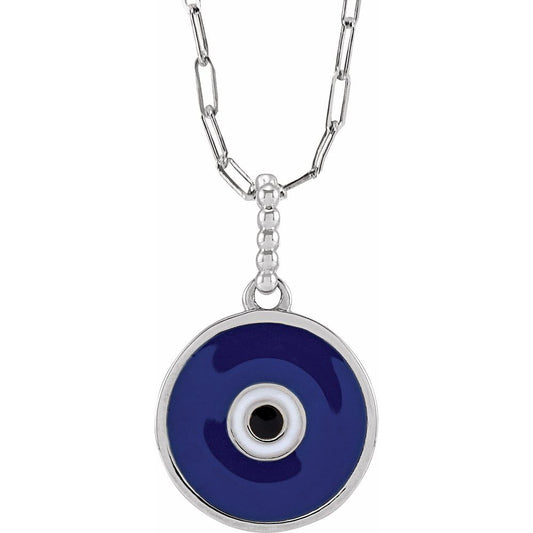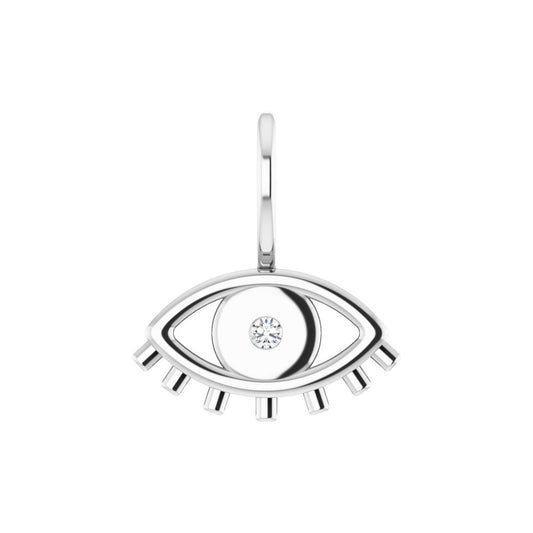Birthstones have always held a special place in our hearts, each one carrying its own unique charm and significance.
For those born in June, there's an extra touch of magic with three stunning birthstones to choose from: pearls, moonstone, and alexandrite. These gems are not only beautiful but are also steeped in rich history and deep symbolism.
In this article, we'll explore the fascinating stories behind these June birthstones. We'll explore what they symbolize, why they've been cherished for centuries, and what makes them so special today.
Whether you're a June baby or just a fan of these captivating gems, you'll discover the unique meanings and timeless appeal of pearls, moonstone, and alexandrite.
June Birthstone: Pearls
Historical Significance of Pearls
Pearls have fascinated humans for thousands of years. In ancient civilizations, they were considered the ultimate symbol of beauty and rarity. The ancient Egyptians, for instance, prized pearls so much that they were buried with them. Cleopatra, the legendary queen, is said to have dissolved a pearl in vinegar and drank it to demonstrate her wealth and power.
In ancient China, pearls were believed to protect against fire and dragons. Chinese royalty wore pearls as symbols of purity and to keep evil spirits at bay. Similarly, the ancient Romans valued pearls as a status symbol. They were worn by the elite and used as a display of wealth and power during public events.
Pearls in Mythology and Folklore
Pearls feature prominently in mythology and folklore. In Hindu tradition, it is believed that the god Krishna discovered the first pearl, which he gave to his daughter on her wedding day. In ancient Greek mythology, pearls were considered the hardened tears of joy from Aphrodite, the goddess of love.
In many cultures, pearls are seen as gifts from the gods, created when the moon kissed the ocean. These myths and legends highlight the mystical and divine status of pearls throughout history.
Symbolism of Pearls
Purity and Innocence
Pearls are often associated with purity and innocence. Their natural, unblemished appearance makes them a perfect symbol for new beginnings, such as weddings. This is why pearls are a popular choice for bridal jewelry, symbolizing the purity and innocence of the bride.
Wealth and Luxury
Historically, pearls were accessible only to the rich and powerful, making them symbols of wealth and luxury. Kings, queens, and nobility adorned themselves with pearls to display their status. Even today, pearls are seen as a luxurious accessory, often associated with sophistication and high social standing.
Wisdom and Serenity
Pearls are also believed to embody wisdom and serenity. Their calming, smooth appearance is thought to bring peace and tranquility to the wearer. Many believe that pearls can help balance one’s emotions and provide a sense of calm and clarity in stressful situations.
Cultural Importance of Pearls
Pearls in Different Cultures
Across the world, pearls have held significant cultural importance. In China, pearls symbolize wisdom and are often given as gifts to bring good luck. In India, they are considered auspicious and are used in various religious ceremonies.
In Western traditions, pearls have long been associated with elegance and grace. They have adorned the necks of influential women throughout history, from Queen Elizabeth I to Coco Chanel, further cementing their status as timeless symbols of beauty.
Notable Historical Figures and Their Famous Pearls
Throughout history, many famous figures have been associated with pearls. Cleopatra, known for her lavish lifestyle, reportedly owned some of the most expensive pearls of her time. Queen Elizabeth I of England was rarely seen without her beloved pearl necklaces, which became a part of her iconic image.
In more recent history, pearls were a favorite of Jacqueline Kennedy Onassis, who was often photographed wearing her signature triple-strand pearl necklace. These historical figures helped shape the perception of pearls as the epitome of elegance and sophistication.
Contemporary Symbolism of Pearls in Jewelry
Today, pearls continue to be trendy and in style. Pearls are cherished for their timeless beauty and elegance. They are often given as gifts to mark significant life events such as graduations, weddings, and anniversaries. The simplicity and sophistication of pearls make them suitable for any occasion, from everyday wear to formal events.
Pearls as Symbols of Elegance and Timeless Beauty
Pearls have a unique ability to transcend fashion trends, maintaining their appeal across generations. They are seen as symbols of timeless beauty, embodying elegance and grace. Whether worn as a single strand necklace or in a more modern design, pearls continue to be a favorite choice for those looking to add a touch of classic elegance to their jewelry collection.
June Birthstone: Moonstone
Moonstone in Ancient Cultures
Moonstone has captivated humans for centuries, admired for its enchanting play of light and mystical appearance. In ancient Rome, moonstone was believed to be solidified rays of the moon, capturing its beauty and magic. The Romans associated moonstone with their lunar deities and often used it in jewelry and amulets.
In Hindu culture, moonstone holds a special place as well. It is considered a sacred stone, believed to be filled with the energy of the moon. According to Hindu mythology, moonstone is made from moonbeams, and it is thought to bring good fortune and divine wisdom. Moonstone is often used in religious ceremonies and is cherished for its spiritual significance.
Myths and Legends Surrounding Moonstone
Moonstone is surrounded by various myths and legends. In ancient Greece, it was associated with the moon goddess, Selene. The Greeks believed that moonstone could bestow love, passion, and fertility to those who possessed it.
In many cultures, moonstone is considered a traveler’s stone, providing protection, especially at night. Sailors and explorers would carry moonstone to ensure safe journeys across the seas. These legends highlight the deep mystical and protective qualities attributed to moonstone throughout history.
Symbolism of Moonstone
Mystery and Magic
Moonstone’s unique ability to change appearance under different lighting conditions has made it a symbol of mystery and magic. The way it shimmers and glows seems almost otherworldly, making it a favorite among those who appreciate its enchanting and mystical qualities.
Femininity and Fertility
Moonstone is often linked to feminine energy and fertility. Its connection to the moon, which has long been associated with female cycles and motherhood, makes moonstone a powerful symbol of femininity. It is believed to enhance fertility, provide emotional balance, and support women through various phases of life.
Protection and Guidance, Especially During Travel
As a traveler’s stone, moonstone is thought to offer protection and guidance, particularly during nighttime journeys. Its calming energy is believed to safeguard travelers from harm and help them navigate through the darkness. This symbolism of protection extends beyond physical travel, offering guidance through life’s emotional and spiritual journeys as well.
Cultural Importance of Moonstone
Moonstone in Spiritual and Healing Practices
Moonstone plays a significant role in spiritual and healing practices around the world. It is often used in meditation to enhance intuition and connect with higher realms. Healers use moonstone to balance emotions, alleviate stress, and promote a sense of calm and peace.
Its Role in Various Cultural Rituals and Traditions
In many cultures, moonstone is incorporated into rituals and traditions. In India, it is considered a sacred stone and is used in ceremonies to bring good fortune and spiritual insight. In other cultures, moonstone is used in love rituals and ceremonies to attract passion and romance.
Modern-Day Meaning
Moonstone in Modern Spiritual and Holistic Contexts
Today, moonstone remains a popular choice for those seeking spiritual and holistic benefits. It is believed to help with emotional healing, enhance psychic abilities, and provide a deeper connection to the natural world. Many people use moonstone in crystal healing practices to balance their chakras and promote overall well-being.
Popularity of Moonstone in Contemporary Jewelry Design
Moonstone’s unique beauty and mystical allure have made it a favorite in contemporary jewelry design. Its shimmering, ethereal quality adds a touch of magic to any piece. From delicate pendants to bold statement rings, moonstone jewelry is cherished for its timeless elegance and enchanting charm. Designers often pair moonstone with other gemstones to create stunning, multi-faceted pieces that capture the imagination.
June Birthstone: Alexandrite
Historical Significance of Alexandrite
Alexandrite was discovered in the Ural Mountains of Russia in the early 19th century. The story goes that the gem was found on the day future Tsar Alexander II came of age, which is why it was named after him. Alexandrite quickly became the official gemstone of Imperial Russia due to its striking beauty and the patriotic red and green colors it displayed, which matched the national military colors of Russia.
Alexandrite’s Status as a Rare and Valuable Gem
From the moment of its discovery, alexandrite was recognized for its rarity and exceptional value. Its unique ability to change color depending on the light source made it a highly sought-after gem. In natural daylight, alexandrite appears green or bluish-green, but under incandescent light, it transforms to a rich red or purplish-red. This remarkable optical property, known as the “alexandrite effect,” adds to the gemstone's allure and value, making it one of the rarest gems in the world.
Symbolism of Alexandrite
Change and Transformation
Alexandrite’s most fascinating characteristic is its ability to change color. This makes it a powerful symbol of change and transformation. It represents the ability to adapt to different situations and to embrace new beginnings with resilience and strength. People who wear alexandrite often find it inspiring as a reminder of the ever-changing nature of life and the beauty that comes with transformation.
Good Fortune and Luck
Throughout history, alexandrite has been considered a stone of good fortune and luck. Its rarity and the difficulty in obtaining it add to this belief. People wear alexandrite jewelry in the hope that it will bring prosperity and protect them from misfortune. This belief is still prevalent today, with many viewing alexandrite as a talisman for attracting good luck.
Love and Balance
Alexandrite is also associated with love and balance. Its dual colors symbolize harmony and the balance between the physical and spiritual realms. The gem is believed to promote love and compassion, fostering deeper connections and emotional stability. It’s often given as a gift to loved ones to symbolize a balanced and harmonious relationship.
Cultural Importance of Alexandrite
Alexandrite in Russian Culture and Its Significance in Royal Jewelry
In Russia, alexandrite holds a special place due to its historical connection with the Russian Tsars. It was often used in royal jewelry, symbolizing the power and prestige of the Russian Empire. The gemstone’s red and green colors were particularly cherished for their patriotic significance. Alexandrite was a favorite among Russian nobility and was frequently incorporated into elaborate pieces of jewelry that were passed down through generations.
Popularity and Rarity in Modern Times
Today, alexandrite remains one of the rarest and most valuable gemstones. Its unique properties and limited availability make it a prized possession for collectors and jewelry enthusiasts. High-quality alexandrite is extremely rare, and when found, it commands high prices in the gemstone market. This rarity enhances its desirability and ensures its status as a gem of exceptional value.
Modern-Day Meaning of Alexandrite
In the modern world, alexandrite’s color-changing ability continues to captivate and intrigue. This unique property symbolizes adaptability and the ability to see beauty in different perspectives. It serves as a reminder that change is a natural part of life and that embracing it can lead to new and exciting possibilities. Alexandrite’s transformation from green to red is seen as a metaphor for personal growth and the journey from one stage of life to another.
The Gem’s Use in Bespoke and High-End Jewelry
Alexandrite’s rarity and mesmerizing beauty make it a popular choice for bespoke and high-end jewelry. Designers and jewelers love working with alexandrite because of its stunning color change and the challenge it presents. It is often set in intricate designs that highlight its unique properties, making each piece a work of art. From engagement rings to luxury pendants, alexandrite continues to be a favorite for those seeking a truly unique and special gemstone.
Choosing the Right June Birthstone
Personal Preference
How to Choose Based on Personal Affinity with the Stone’s Symbolism
When it comes to choosing the right June birthstone, personal preference plays a significant role. Each of the three June birthstones—pearl, moonstone, and alexandrite—carries unique symbolism and meaning, which can help guide your decision.
- Pearls: If you resonate with purity, innocence, and timeless elegance, pearls might be the perfect choice for you. They are ideal for those who appreciate classic beauty and want to embody a sense of serenity and wisdom.
- Moonstone: If you feel drawn to mystery, magic, and feminine energy, moonstone is a wonderful option. It’s perfect for those who are fascinated by the mystical and enjoy the calming, protective qualities it offers.
- Alexandrite: If you are intrigued by transformation, change, and luck, alexandrite could be your ideal birthstone. Its unique color-changing property symbolizes adaptability and resilience, making it a great choice for those who embrace new beginnings and personal growth.
Occasions and Gifting
Which Birthstone Suits Different Occasions or Recipients
June birthstones make thoughtful and meaningful gifts for a variety of occasions. Here’s how to choose the right one based on the event or recipient:
- Birthdays: For a June birthday, any of the three birthstones would make a lovely and personal gift. Consider the recipient’s personality and preferences to decide which stone aligns best with their traits and tastes.
- Weddings and Anniversaries: Pearls are a traditional choice for bridal jewelry due to their association with purity and elegance. They also make excellent anniversary gifts, symbolizing the beauty and endurance of the relationship.
- Graduations and Milestones: Alexandrite, with its symbolism of transformation and new beginnings, is a fitting gift for graduations or any milestone event. It represents the journey of growth and change, making it an inspiring present.
- Spiritual and Healing Gifts: Moonstone, known for its calming and protective properties, is a wonderful gift for someone who values spirituality and healing. It’s also a thoughtful choice for those embarking on new adventures or facing significant life changes.
June Birthstone Styling Tips
How to Incorporate June Birthstones into Everyday Wear and Special Events
June birthstones can be beautifully incorporated into both everyday wear and special occasions. Here are some styling tips to help you make the most of these stunning gems:
- Everyday Elegance with Pearls: Pearls are incredibly versatile and can add a touch of sophistication to any outfit. For everyday wear, consider simple pearl stud earrings or a delicate pearl pendant necklace. These pieces can effortlessly elevate casual attire or complement office wear.
- Enchanting Moonstone Accessories: Moonstone’s unique shimmer makes it a standout piece for both day and night. For a casual look, choose moonstone rings or bracelets that catch the light and add a hint of magic. For evening events, a moonstone statement necklace or chandelier earrings can create a mystical and elegant appearance.
- Alexandrite’s Dynamic Style: Alexandrite’s color-changing property makes it a fascinating choice for jewelry that transitions from day to night. Wear alexandrite stud earrings or a subtle ring during the day, and let a striking alexandrite necklace or cocktail ring be the centerpiece for evening events. The changing hues will capture attention and spark conversation.
- Layering and Mixing: Don’t be afraid to mix and layer different June birthstones for a unique and personalized look. For instance, pair a pearl necklace with a moonstone bracelet, or stack alexandrite rings with other gemstone bands. This not only showcases your personal style but also highlights the diverse beauty of June’s birthstones.
Takeaway
Choosing the right June birthstone is a deeply personal decision that allows you to connect with the unique symbolism and beauty of pearls, moonstone, and alexandrite.
Each of these stones offers something special: the timeless elegance and purity of pearls, the mystical allure and protective qualities of moonstone, and the transformative magic and rarity of alexandrite.
Whether you're selecting a piece of jewelry for yourself or as a meaningful gift for a loved one, considering the symbolism, occasion, and personal style can guide you in making the perfect choice.
Pearls bring a touch of classic sophistication, moonstone adds a mystical and calming presence, and alexandrite offers a dynamic and enchanting charm.
By incorporating these stunning gems into your everyday wear or special events, you celebrate not only your birth month but also the unique qualities that each stone represents.
Embrace the magic and beauty of June birthstones, and let them add a touch of elegance, mystery, and transformation to your life.
Remember, whether you choose pearls, moonstone, or alexandrite, you are wearing a piece of history and a symbol of your own unique journey. Explore the enchanting world of June birthstones and discover the perfect gem that resonates with your spirit and style.





